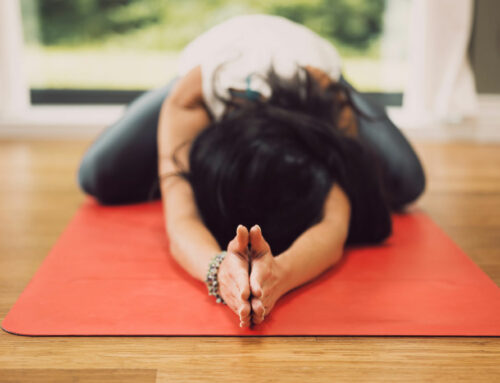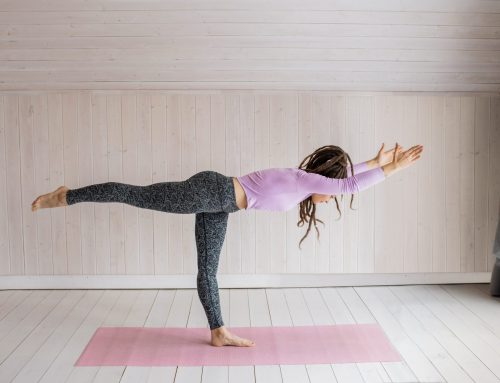10 Meditation Exercises and Activities to Practice Today
In our busy world, the mind is always processing thoughts, leaving us stressed and at times anxious. Practicing mindfulness meditation exercises could help calm your system and bring the peace you need to find a balance in life.
Mindfulness meditation exercises are nothing new. For years, people have explored ways to bring a balance to life away from all the nervousness and emotions. One of the best solutions for this has been taking a few minutes a day to meditate. It does not require things you don’t have to meditate, making it a beautiful way to bring peace to life.
If you’re looking to get started with meditation, you should not stress getting the fanciest gear, but learning a few meditation exercises and activities could give you the perfect start to mindfulness.
Here are 10 exercises that should form a part of your meditation.
-
Mindful Breathing

Among simple meditation exercises you could embrace include mindful breathing. You can do this sitting or standing up, and anywhere at any time .If you can find time to sit and meditate, that’s perfect, but if not, it would still work. Regardless of your situation, you should focus on your breath for about one minute while doing this exercise.
Begin by breathing in and out slowly in 6-second breath cycles. Breathe in through the nose and out through the mouth, allowing your breath to flow in and out effortlessly. Disengage from your thoughts and let go of thoughts about things you want to do later or any pending tasks. Focus and let thoughts rise or fall on their rhythm.
-
Mindful Observation

This is one of the meditation exercises for focus that helps you appreciate simple elements of your environment. It’s designed to connect you with the beauty of nature surrounding you, something we easily miss when rushing around to complete different tasks.
Pick an object from your immediate environment and watch it for a minute or two. Relax and don’t do anything and watch as long as your concentration can hold. Stare at the object as if you saw it for the first time. Explore the different aspects of its formation, allowing yourself to be consumed by its beauty.
-
Mindful Awareness
If you love easy meditation exercises, practicing mindful awareness could suit your needs. Through this exercise, you cultivate an awareness and appreciation of simple tasks and their results. Imagine something that happens more than once; a thing you usually take for granted, like opening the windows, for example.
Touch the window and open it, then stop for a moment, be mindful of your present location, things you can feel at that moment, and where the window leads you. These cues don’t need to be physical. For example, whenever you get negative thoughts, you can pause, flag the thoughts as unhelpful, and then release the negative energy.
-
The Body Scan Meditation
Body scan meditation offers one of the quick meditation exercises you should embrace to mute distractions and focus on parts of your body. It’s an effective meditation technique that allows you to be more aware of your feelings in that particular moment.
Get in a comfortable position, maybe seating or lying down. Close your eyes and engage in deeper practice. Begin with your toes and pay attention to any sensations, like discomfort or pain. Take a deep breath through the nose and let the air out through your mouth. Move progressively up your body and focus on each muscle group at a time.
-
Progressive Muscle Relaxation

This is one of the meditation exercises for beginners that help you tense muscles in your body, from head to toes, and then release them. It helps the body relax and can decrease muscle tension, back and neck pain, fatigue, and muscle spasms. For more comfort you may wear gym clothing if you are doing this at home.
Get in a comfortable position and tense then release each muscle group for five seconds or so. Begin with a few deep breaths. Tense, hold, and relax each muscle. Pay attention to notice the contrast between tensed and relaxed state.
-
Gratitude Meditation

Gratitude meditation ranks among yoga meditation exercises that help you to focus on the gifts in your life. The practice focuses on things you are thankful for and can help you get away from the negative thoughts onto the positive. With your eyes closed, mentally list about seven things you are most grateful for, like a loving spouse, a warm home, a caring friend, or good health.
-
The Blackboard Technique
Counting is an excellent way to induce you into sleep. If you want meditation exercises for sleep, this will help you. The technique involves writing numbers on a chalkboard then erasing them only in your mind. With the technique, you can also imagine a black curtain, and then visualize numbers appearing then disappearing. This will make you sleepy as you get bored trying to stay focused.
To get started, close your eyes and picture a blackboard, which can be as big as you like. In your imagination, pick a chalk and write a number on the board. Erase the number slowly, ensuring you remove all the chalk. Write another number, and then repeat the process. Continue until you fall asleep.
-
Mindful Listening
The exercise opens your ears to sound without being judgmental. It trains your mind to focus and avoid being swayed by past experiences or perceptions. For example, you may dislike a song because it triggers memories of a rough period in your life. In this practice, the idea is to listen to a song without engaging experiences or perceptions from the past. You listen from a neutral standpoint while maintaining present awareness.
To explore mindful listening, select some music. Close your eyes and wear your headphones. Avoid getting drawn into being judgmental based on title, genre, or artist before it begins. Instead, embrace neutrality and get lost in the beauty of sound. Explore different aspects of the song, even if it’s a genre you don’t enjoy. Listen to the voice, instruments, and any tones.
-
Stillness Challenge
If you are a teacher and you prefer guided meditation exercises, the stillness challenge would be a perfect option. For this challenge, you need a timer, which you will use to teach children the premise behind mindfulness and meditation. You ask the students to sit still and listen to soothing music.
Ask them to find cozy spots and sit without moving with their eyes closed. They should not fidget for about 3 minutes. Once the timer goes off, the students open their eyes and stretch. Begin with 1 minute and increase the timing progressively.
-
Walking Meditation

If you love the outdoors, the walking meditation will work perfectly. In this exercise, you walk silently contemplatively to calm your mind, body, and spirit. A short or long walk can ease away anxiety and stress.
Find a suitable location, one that is peaceful as you don’t want distractions. Walkabout 15 steps and pause to breathe. Observe your surroundings and contemplate the foliage, the trees, the flowers, and even the soil. Also, observe as you walk and do this silently with deep contemplation.
Conclusion
With the practice of meditation exercises, you avoid being led by negative influences and fears of future outcomes. It helps you harness the powerful ability to root your mind in the present to deal with life’s challenges in a calm, clear-minded, and assertive way.
Kevin has been writing content for about 3 years. He really wants to share his experiences and advice with anyone who cares about health and fitness. He enjoys helping people achieve their fitness goals with simple instructions and overcoming any obstacles on the way.







